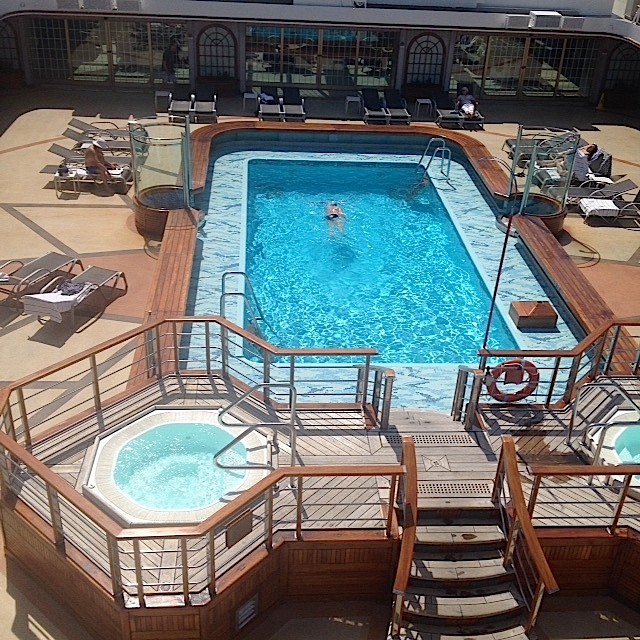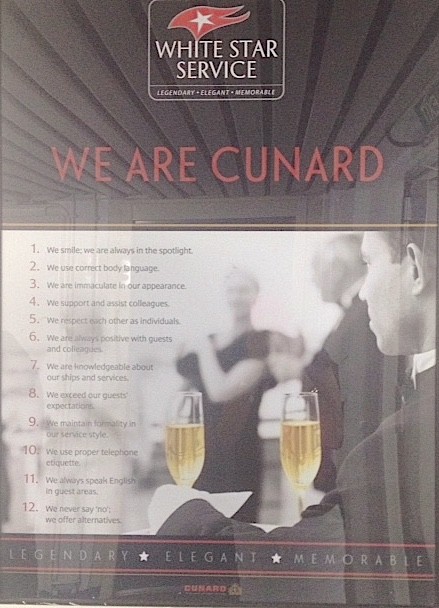There is so much about the British way of doing things that so much of the world enjoys.
Apart from giving so many people a first, second or official language, the English have spread their traditions, tastes and technology to all corners of our globe.

As an island nation the British have always been good at sea.
In the days of Empire the appearance of their ships over the horizon was not universally welcomed but for many they were a great boost.
It is said that in 1840 the citizens of Boston brought thousands of gifts to Samuel Cunard as he arrived on his first vessel from Liverpool via his home town of Halifax Nova Scotia. They were grateful he had chosen their port as a hub for his bold shipping adventure.
That ship was a paddlewheel steamer, the Britannia a mere 200ft long with a speed of 9 knots and 115 passengers; a vessel not many of us these days would choose to cross the awesome Atlantic.
It took 14 days. By the 1880s, his bigger and faster ships had reduced that time to 6 days. With a precious Royal Mail contract his expanding fleet gained a reputation for reliability and safety, while still holding the Blue Riband for the fastest crossing.
175 years later his name lives on in a modern and exclusive fleet.

You have three ladies in regal black, white and red to choose for your crossing or cruise: the Queen Mary 2, the Queen Elizabeth and the Queen Victoria. Considerably larger, sturdier, faster and infinitely superior in appointments to those of the early days.
They have had time to perfect their lineage; some 248 ships have been owned by Cunard since 1840.
What’s behind those gleaming corridors?
At TML we are relentlessly curious as to how and why the grand brands, marques, dynasties and companies became what they are today. We love to go behind the scenes, and talk to the people who make your experiences magnificent.

So we were fortunate when on a brief voyage aboard the Queen Victoria from Melbourne to Sydney we not only sampled the many pleasures of British hospitality we also had a number of backroom tours to see what makes this great liner tick. Well not tick exactly, it hums with power, but you know what we mean. Certainly the planning and delivery of service had the precision of clockwork.
First to the bridge
Now there’s a view! The slightly ruffled blue ocean stretches away to the horizon. How do you steer this leviathan? A big wooden wheel the size of a man? No, with a finger-sized joystick a kid might have on a video game.

Banks of computers and screens connect the crew to their surging ship. No more paper charts and maps. All electronic with every detail upgraded daily. Vessels for many miles around are identified on a screen, their speed and movements relayed to the personnel on watch. On port and starboard, a wing of the bridge extends over the side of the ship. A glass floor allows officers to look directly down for docking manoeuvres. From this vantage point the crew can control the main propellors mounted in swivelling pods and thrusters mounted in the bow, to turn the ship, huge as it is, on a sixpence.

We admired the colorful flag locker. Recognised by all ships at sea, each pennant represents a letter of the alphabet to spell out longer messages, or single flags can quickly signal: I have a pilot on board. I have a diver down. I am taking on fuel.

We are asked to step back as they carry out an emergency drill. They were not warned it was coming. Medical staff are involved. Phone calls go back and forth. Their training pays off. It goes well. Fire, flood, missing person drills, some involving the whole crew – they do these regularly.
The power down below
Mightily impressed we descend many narrow flights of stairs, clanging white-painted steel, not marble and Wilton carpet, such as the guests enjoy.

We arrive at the lower decks, and pass along the so-called ‘Burma Road’ the main crew thoroughfare of the ship, packed and noisy with uniforms of all ranks and occupations. We see what they see every day, precise maps of all the ship’s decks and passageways, noticeboards with safety instructions, permanent regulations and daily up-dates. We see posters exhorting all to keep on their toes. One poster headed We are Cunard lists the 11 principles of White Star Service. They are reminded of the ‘Moment of Truth” when a guest comes into contact with a crew member.
We reach the baggage handling area where in some ports 5000 pieces of luggage could be onloaded in an hour and a half or offloaded in half that time.
There is a garbage incinerator. All the rubbish on board is squashed and burnt. The ash is taken off at the next port.
Food glorious food. And plenty of it
We arrive at the chilled food storage rooms and the galley kitchens. They are huge, occupying all the space under the two level Britannia restaurant. The deck below is further packed with juices, soft drinks, beer, wine and spirits.
We are told that at the next port, Brisbane, they will take on 60 tons of fresh fruit, vegetables and flowers.
Many of the quintessential staples, like HP sauce and Marmite, are shipped in containers from the UK months in advance to be collected as the ship visits major ports on its travels. Guests expect a constant supply of Britishness wherever they are in the world.

The executive chef, a Cunarder since 1988, shows us around the labyrinthine passageways of gleaming stainless steel and glass, cool cabinets and hotplates, prep areas and plating benches. We are in between meal service so there are no throngs of waiters, but kitchen hands and chefs are in small groups preparing.
When the rush is on, waiters may pass through this area six times during one meal service. They return with the used plates, and all wash their hands before they pick up the next course to serve.

The ship has its own bakery. Loaves, rolls, cakes, scones and desserts rise fragrantly each day from its car-sized ovens.
In the Sweets Corner the team is working on an extremely tall wedding cake.
Shiny stainless doors front huge machines ready to dispense coffee, toast and juice.
Around another corner, dishwashers can handle 12,000 plates, bowls cups and saucers per service. As well as cutlery.
Chef tells us of his particular concern in catering for the 10% of guests with special diets: lactose-free, gluten free, kosher, halal.
He tells us the ingredients for their meals have to be estimated and ordered months in advance of their preparation.
The special restaurant, The Verandah (named after the one on the original Queen Mary, now a tourist attraction in California) has its own kitchen and chefs.
As well as the guests, the galleys must keep the crew well fed and contented. Happy crew, happy cruise.
The Verandah or the Britannia … you choose

We enjoyed the delights of both restaurants for dinner on consecutive nights. On your cruise you can take your time to choose which one whenever.
The Britannia is very big. But very comfortable. Not noisy, just a pleasant hum of busy-ness, serving and eating, gently tinkling and murmuring . Service is remarkably efficient and pleasant considering the numbers in place. The food is punctual and generous. As reassuring as home cooking (if you have a decent chef at home) but much more towards fine dining without unnecessary flourishes. The sommelier brought us some wonderful pairs of bottles to compare.

The Restaurant, for which, quite justifiably, you pay a little extra is much more intimate, table settings exquisite with delightful British crockery, and the food more adventurous, more individual. We requested escargots and chose to have them served in the classic French style. Our mains included some great rare beef and terrific chips, how British, and ‘pudding’ was wonderful. A pair of luscious ice creams on gold-rimmed plates. Finishing with a totally generous plate of sweet nibbles in traditional crimped paper cups.

I’ll be seeing you again
Another officer talks of the great “repeater score”. The number of guests who have been coming back for years. Some want to try all the Queens, but most have their favourite. Even their favourite stateroom which they take every time. On board our ship, out of 1800 or so, 330 are on a world cruise. I20 days Southampton to Southampton. Some guests have done 15 world voyages, but some these days break such a trip into five sectors over a few years, flying in and out after each leg. Southampton to San Francisco. SanFran to Sydney. Sydney to Hong Kong. Honkers to Dubai. And the final leg back to Old Blighty.

For them, too much Cunard is never enough.
As one of the officers told us “We are Cunard. Our style is civilized and formal.”

No, you don’t have to sleep every night in your ball gown or tuxedo, but you will certainly feel right at home presenting yourself elegantly in the evenings. These will be special nights in your life.
This is the British spirit, and your voyage will be the richer for appreciating it.
Ready to sign up?
Queen Victoria will make history in 2017 as the largest ship ever to sail on the mighty Amazon River, with a five-night cruise on the famous waterway featuring as part of her 120-day world voyage.
Just one of the magnificent travel options, as the three Queens glide regally round the world
For more information and bookings visit www.cunard.com
Disclaimer: TML were guests of Cunard



